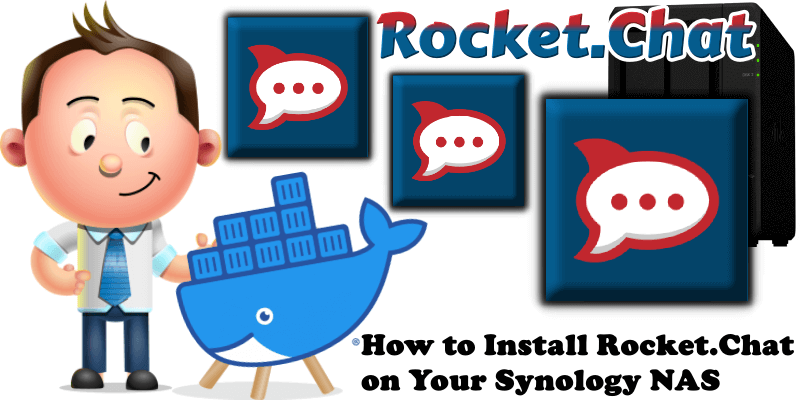
Rocket.Chat is a fully customizable communications platform for organizations with high standards of data protection. It enables real-time conversations between colleagues, with other companies or with your customers, regardless of how they connect with you. In this step by step guide I will show you how to install Rocket.Chat on your Synology NAS using Docker & Portainer.
⚠️ WARNING: Rocket.Chat is evolving and MongoDB 4.0 will be deprecated. MongoDB 6 requires a CPU with AVX support.
Unsupported NAS Models (that don’t support MongoDB 6): DS218+ DS718+ DS220+ DS720+ DS920+ and older consumer models. You can always run Rocket.Chat with an older mongo version, but there is no guarantee that Rocket.Chat will continue to work with older Mongo versions. To install Rocket.Chat with MongoDB 4 in unsupported NAS models, read the “Warning” note at STEP 17. Remember, there is no guarantee that rocketchat will work with older NAS models. After running extensive tests it has resulted that only the 18+ series NAS works with the older MongoDB 4. The NAS models that DO NOT support Rocket.Chat at all due to hardware limitations are the 20+ series like the DS220+, DS720+, DS920+, DS1520+.
Supported NAS Models (that support MongoDB 6): All NAS models from the 21+, 22+, 23+ 24+ series.
Note: It’s a possibility that older NAS devices have AVX support. Check your NAS CPU to see if it supports AVX.
What is MongoDB? MongoDB is a database. Classified as a NoSQL database program, MongoDB uses JSON-like documents with optional schemas.
STEP 1
Please Support My work by Making a Donation.
STEP 2
Install Portainer using my step by step guide. If you already have Portainer installed on your Synology NAS, skip this STEP. Attention: Make sure you have installed the latest Portainer version.
STEP 3
Make sure you have a synology.me Wildcard Certificate. Follow my guide to get a Wildcard Certificate. If you already have a synology.me Wildcard certificate, skip this STEP.
STEP 4
Go to Control Panel / Login Portal / Advanced Tab / click Reverse Proxy. Follow the instructions in the image below.
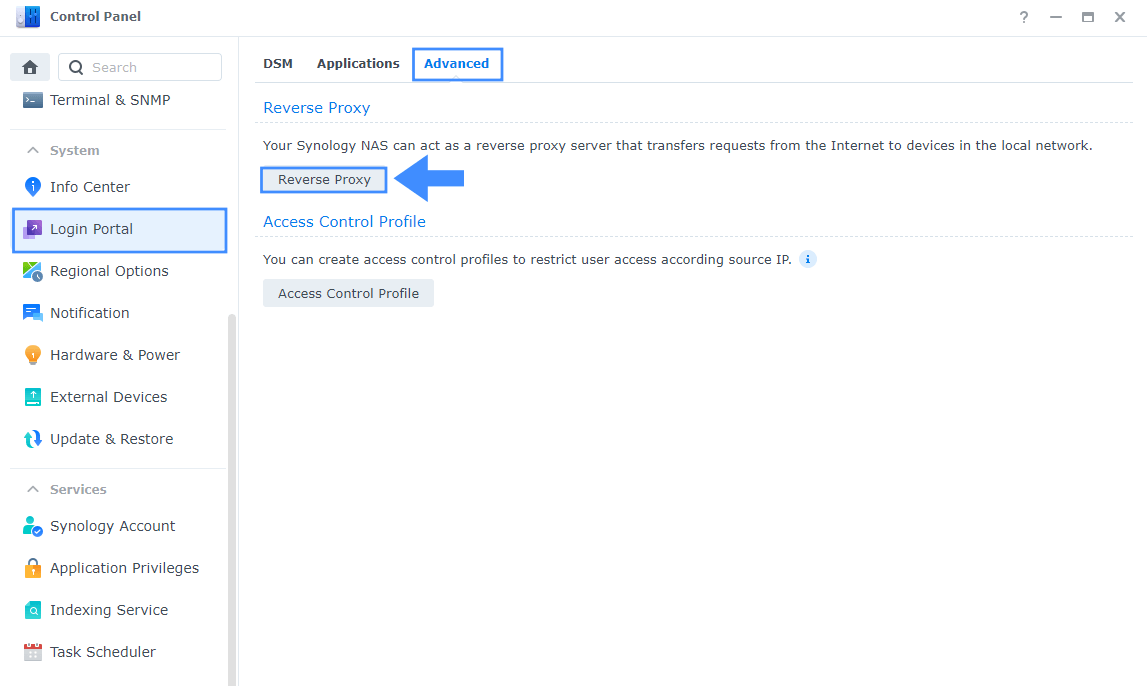
STEP 5
Now click the “Create” button. Follow the instructions in the image below.
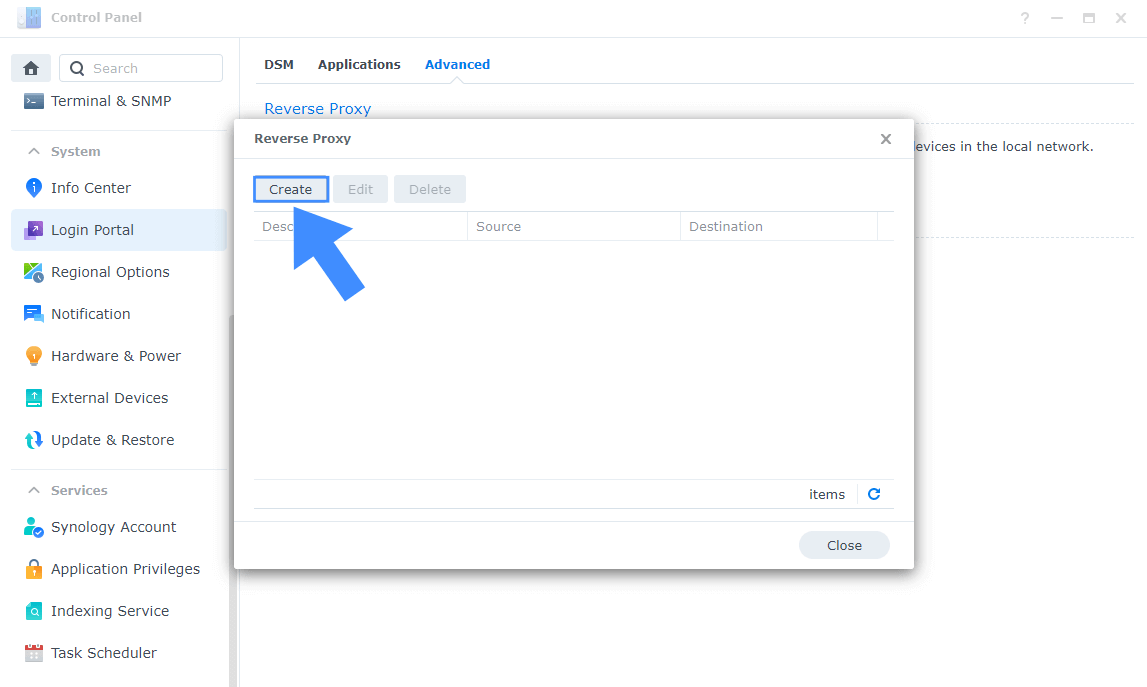
STEP 6
After you click the Create button, the window below will open. Follow the instructions in the image below.
On the General area, set the Reverse Proxy Name description: type in rocketchat. After that, add the following instructions:
Source:
Protocol: HTTPS
Hostname: rocketchat.yourname.synology.me
Port: 443
Check Enable HSTS
Destination:
Protocol: HTTP
Hostname: localhost
Port: 3111
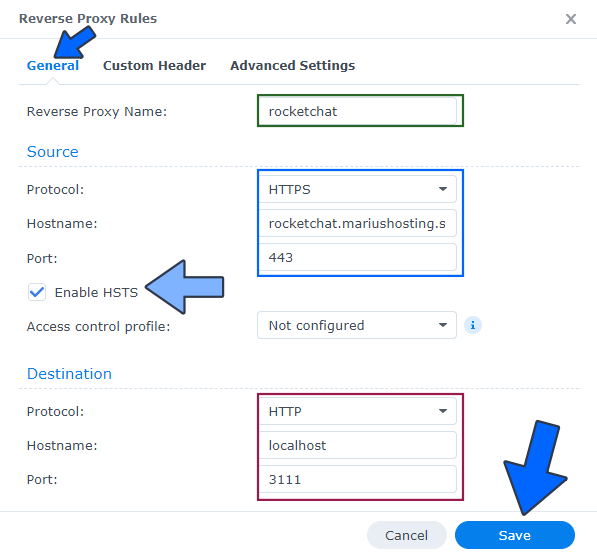
STEP 7
On the Reverse Proxy Rules click the Custom Header tab. Click Create and then, from the drop-down menu, click WebSocket. After you click on WebSocket, two Header Names and two Values will be automatically added. Click Save. Follow the instructions in the image below.
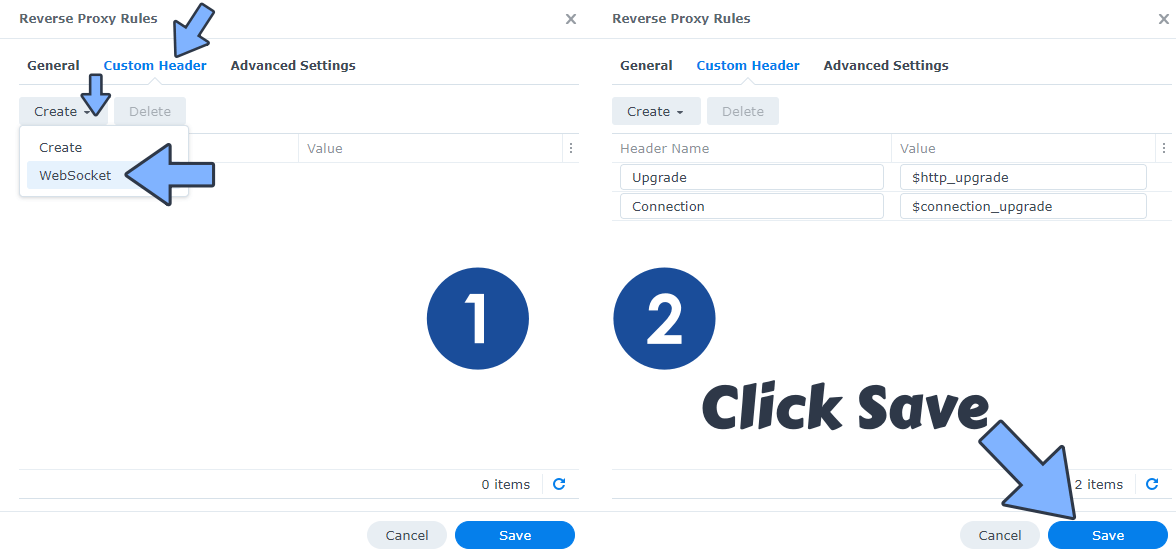
STEP 8
Go to Control Panel / Network / Connectivity tab/ Check Enable HTTP/2 then click Apply. Follow the instructions in the image below.
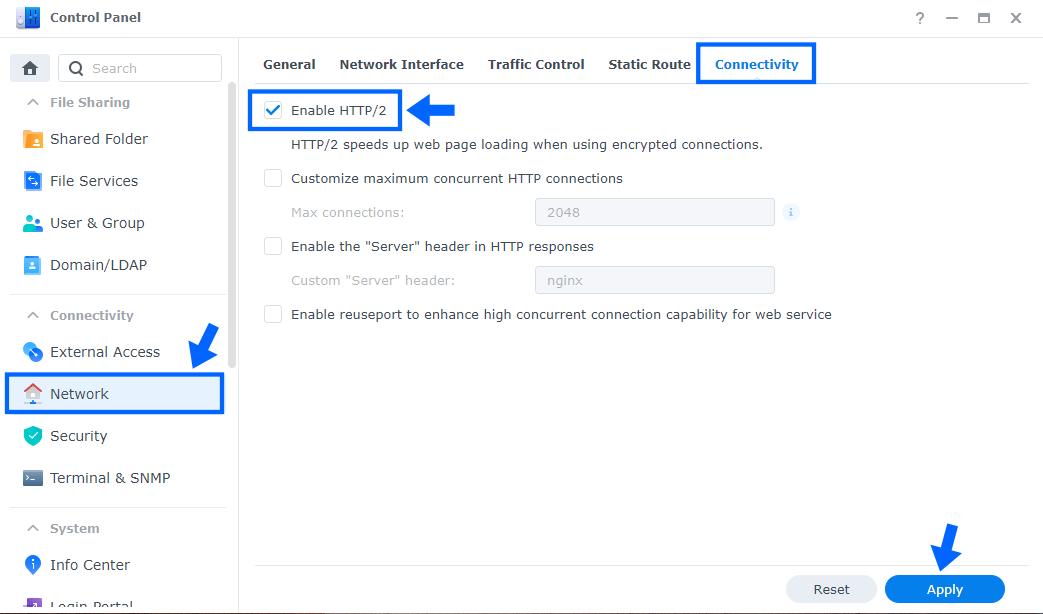
STEP 9
Go to Control Panel / Security / Advanced tab/ Check Enable HTTP Compression then click Apply. Follow the instructions in the image below.
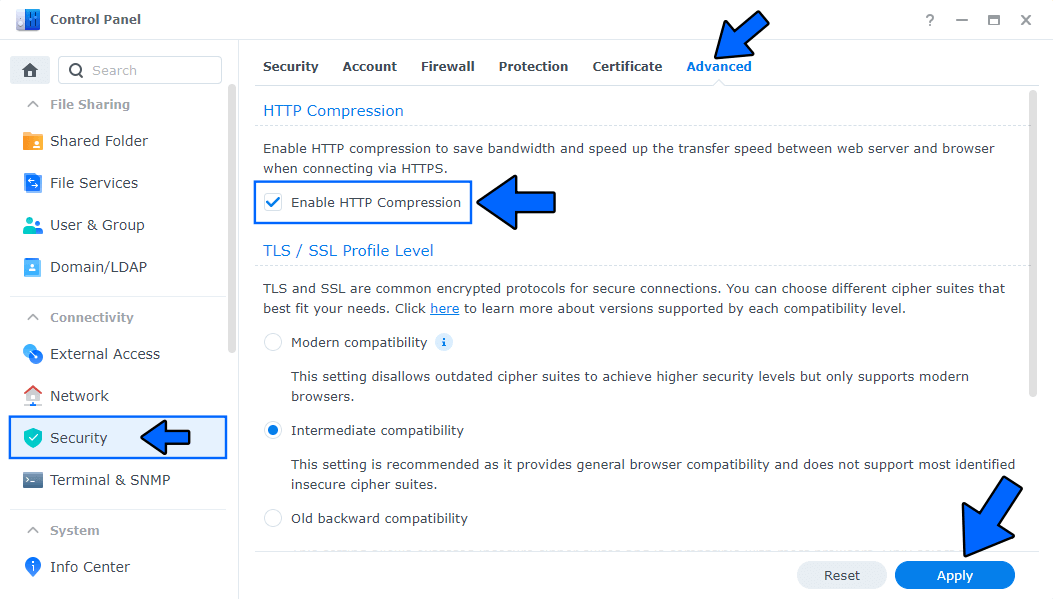
STEP 10
Go to File Station and open the docker folder. Inside the docker folder, create one new folder and name it rocketchat. Follow the instructions in the image below.
Note: Be careful to enter only lowercase, not uppercase letters.
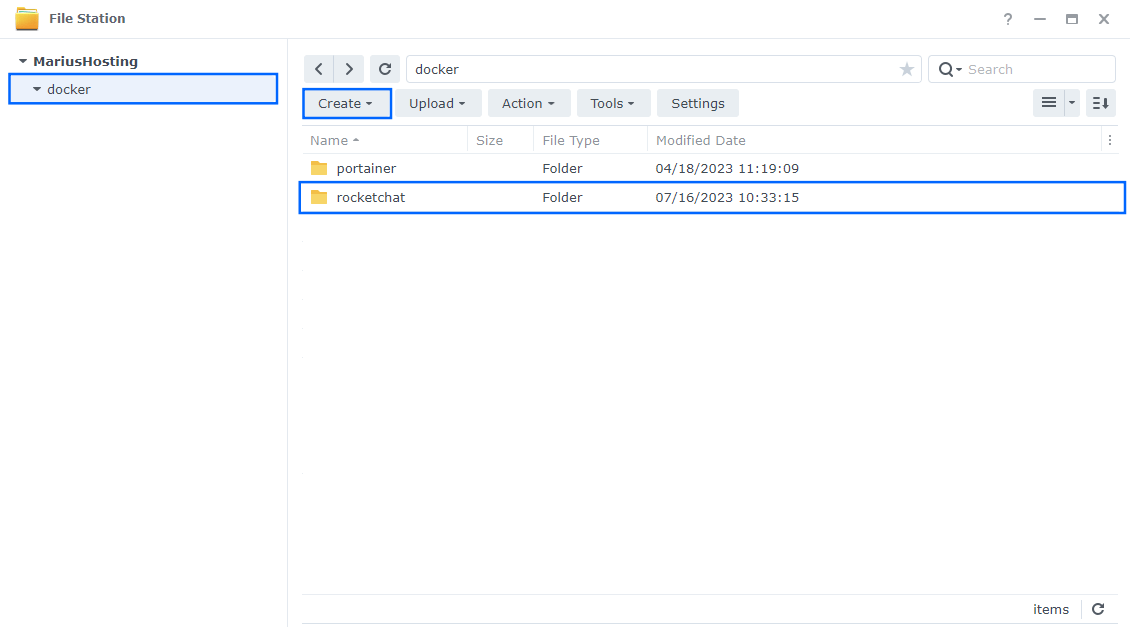
STEP 11
Now create two new folders inside the rocketchat folder that you have previously created at STEP 10 and them data and db. Follow the instructions in the image below.
Note: Be careful to enter only lowercase, not uppercase letters.

STEP 12
Right click on the rocketchat folder that you have previously created at STEP 10 then click Properties. Follow the instructions in the image below.
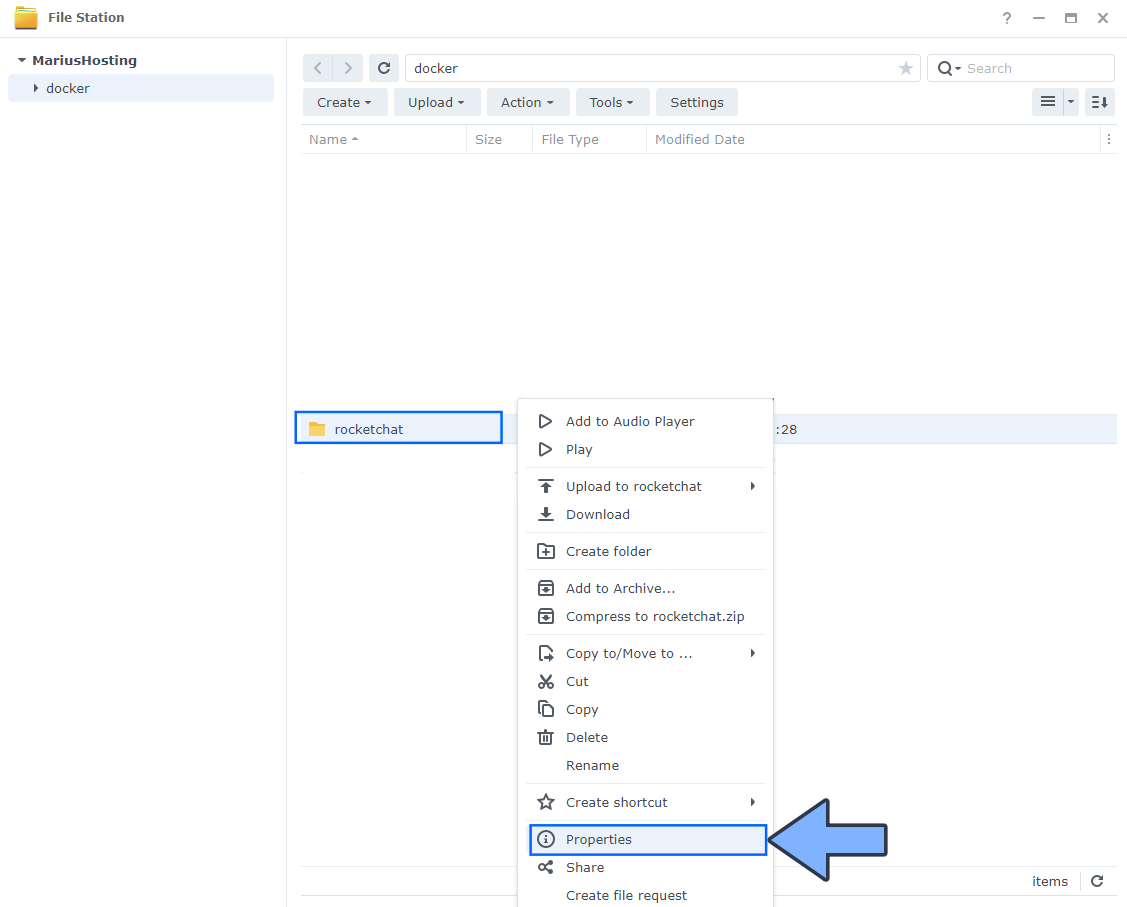
STEP 13
Go to the Permission tab then click Advanced options. From the drop-down menu choose “Make inherited permissions explicit“. Follow the instructions in the image below.
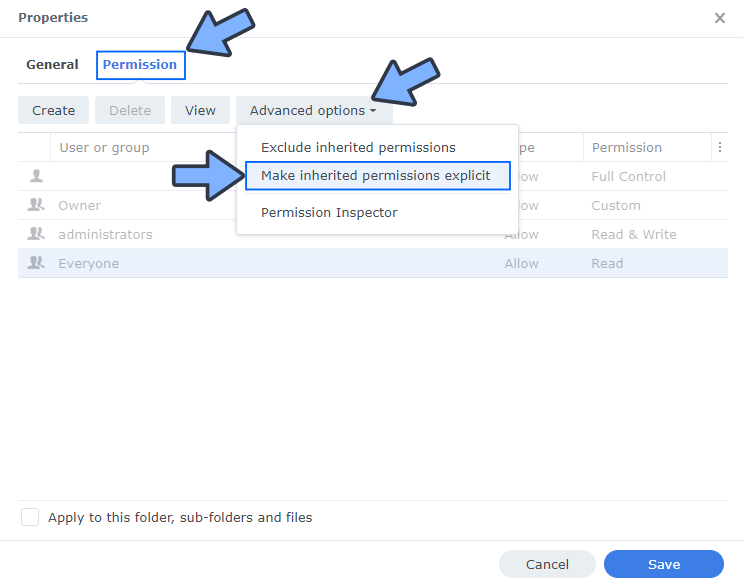
STEP 14
Select Everyone then click the Edit tab. Follow the instructions in the image below.
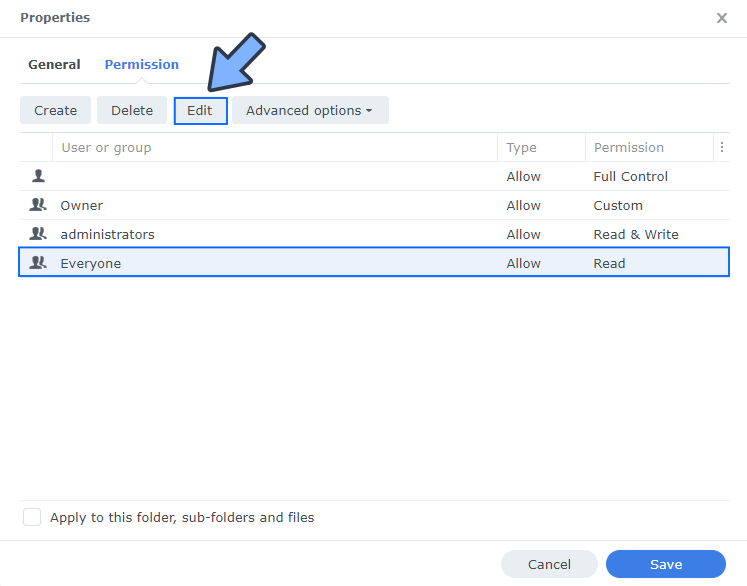
STEP 15
Check all Read and Write Permissions. Click Done. Follow the instructions in the image below.
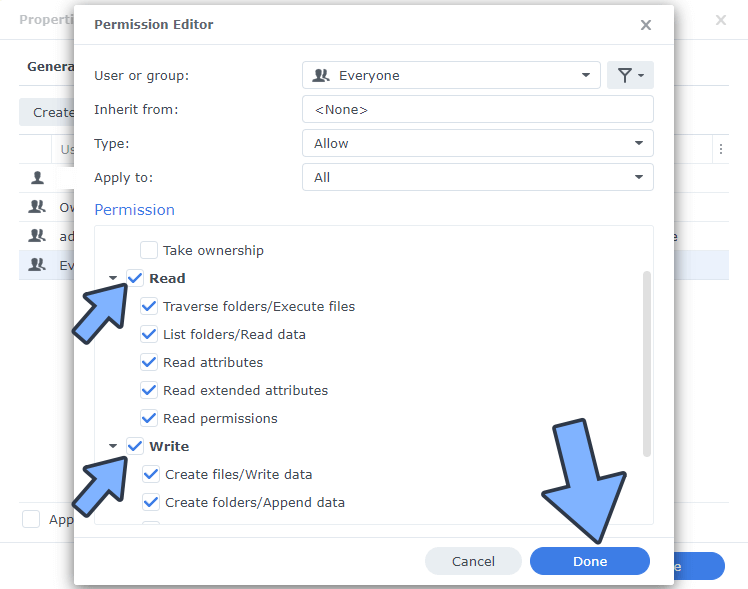
STEP 16
After you click Done on STEP 15, check “Apply to this folder, sub-folders and files“. Click Save. Follow the instructions in the image below.
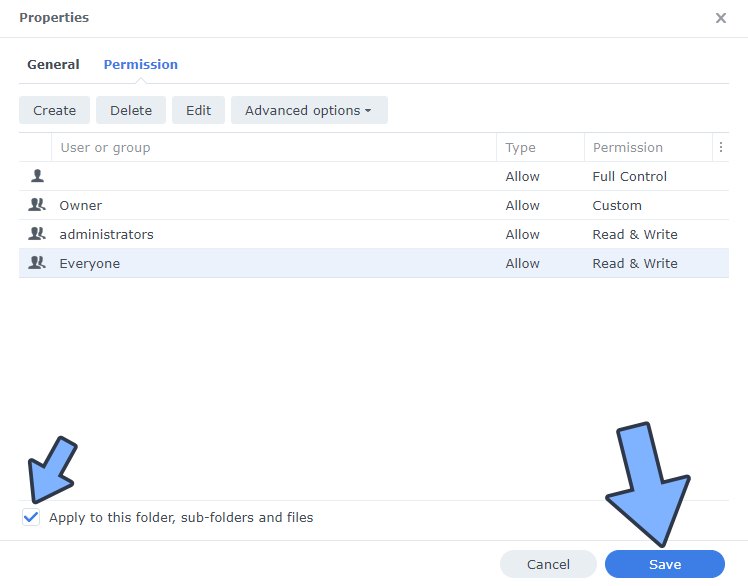
STEP 17
Log into Portainer using your username and password. On the left sidebar in Portainer, click on Stacks then + Add stack. Follow the instructions in the image below.
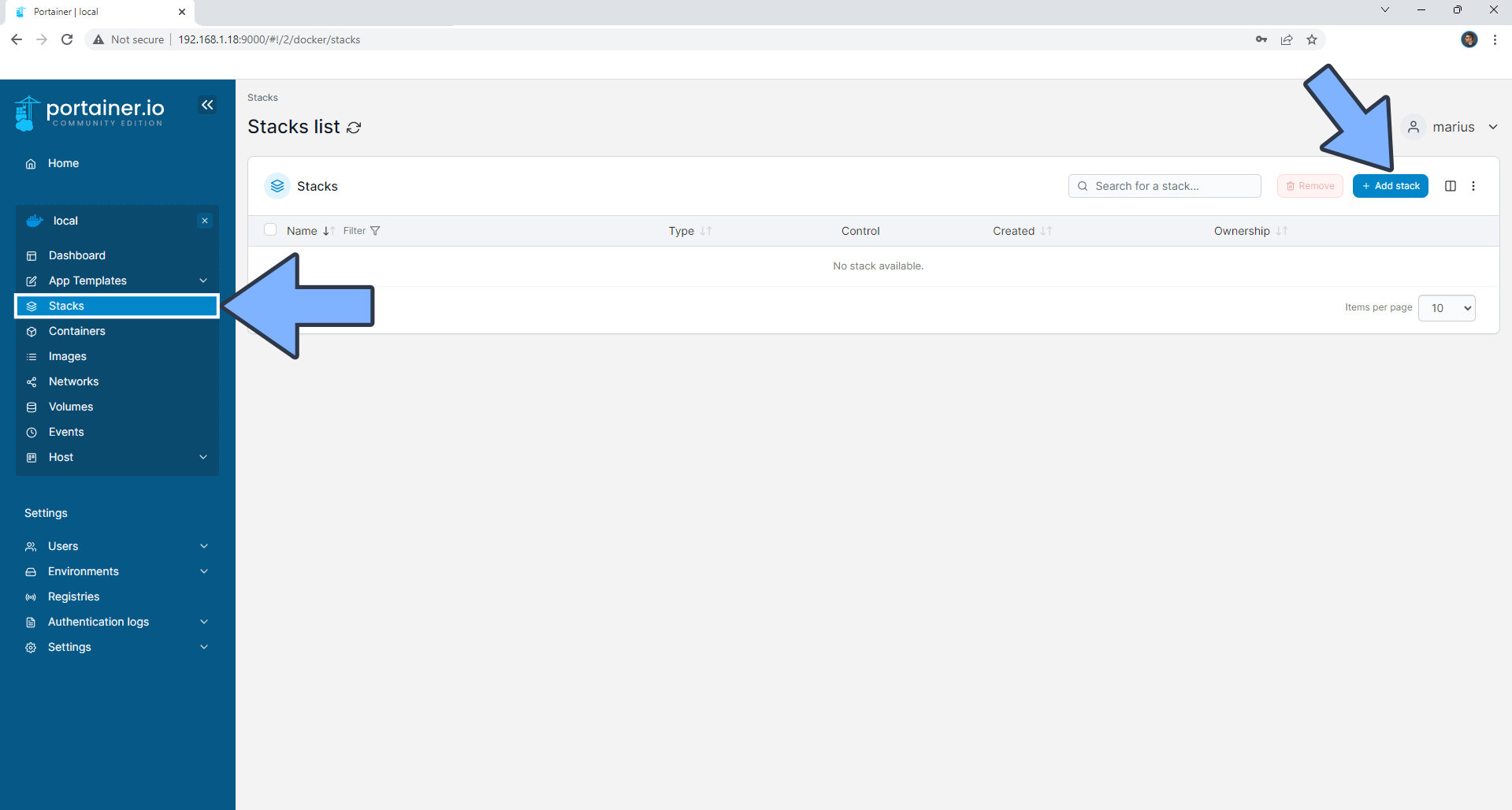
STEP 18
In the Name field type in rocketchat. Follow the instructions in the image below.
services:
db:
image: docker.io/bitnami/mongodb:7.0.5-debian-11-r22
container_name: RocketChat-DB
hostname: rocketchat-db
security_opt:
- no-new-privileges:true
healthcheck:
test: ["CMD", "mongosh", "--eval", "db.adminCommand('ping')"]
interval: 10s
timeout: 10s
retries: 5
start_period: 20s
environment:
MONGODB_REPLICA_SET_MODE: primary
MONGODB_REPLICA_SET_NAME: rs0
ALLOW_EMPTY_PASSWORD: 1
MONGODB_SYSTEM_LOG_VERBOSITY: 3
volumes:
- /volume1/docker/rocketchat/db:/bitnami/mongodb:rw
restart: on-failure:5
rocketchat:
image: rocketchat/rocket.chat:latest
container_name: RocketChat
healthcheck:
test: ["CMD-SHELL", "nc -z 127.0.0.1 3000 || exit 1"]
interval: 10s
timeout: 5s
retries: 3
start_period: 90s
hostname: rocketchat
security_opt:
- no-new-privileges:true
environment:
MONGO_URL: mongodb://rocketchat-db:27017/rocketchat?replicaSet=rs0
MONGO_OPLOG_URL: mongodb://rocketchat-db:27017/local?replicaSet=rs0
ROOT_URL: https://rocketchat.yourname.synology.me
URL: https://rocketchat.yourname.synology.me
PORT: 3000
DEPLOY_METHOD: docker
volumes:
- /volume1/docker/rocketchat/data:/app/uploads:rw
ports:
- 3111:3000
restart: on-failure:5
depends_on:
db:
condition: service_started
Note: Before you paste the code above in the Web editor area, change the value for ROOT_URL and add your own synology.me wildcard that you have set up at STEP 6. In the code above don’t forget to add https:// before rocketchat.yourname.synology.me
Note: Before you paste the code above in the Web editor area, change the value for URL and add your own synology.me wildcard that you have set up at STEP 6. In the code above don’t forget to add https:// before rocketchat.yourname.synology.me
Warning: As I explained at the beginning of this article, if your NAS CPU does not have AVX support, in the code above type in mongodb:4.4 instead of mongodb:7.0.5-debian-11-r22 After running extensive tests it has resulted that only the 18+ series NAS works with the older MongoDB 4. The NAS models that DO NOT support Rocket.Chat at all due to hardware limitations are the 20+ series like the DS220+, DS720+, DS920+, DS1520+.
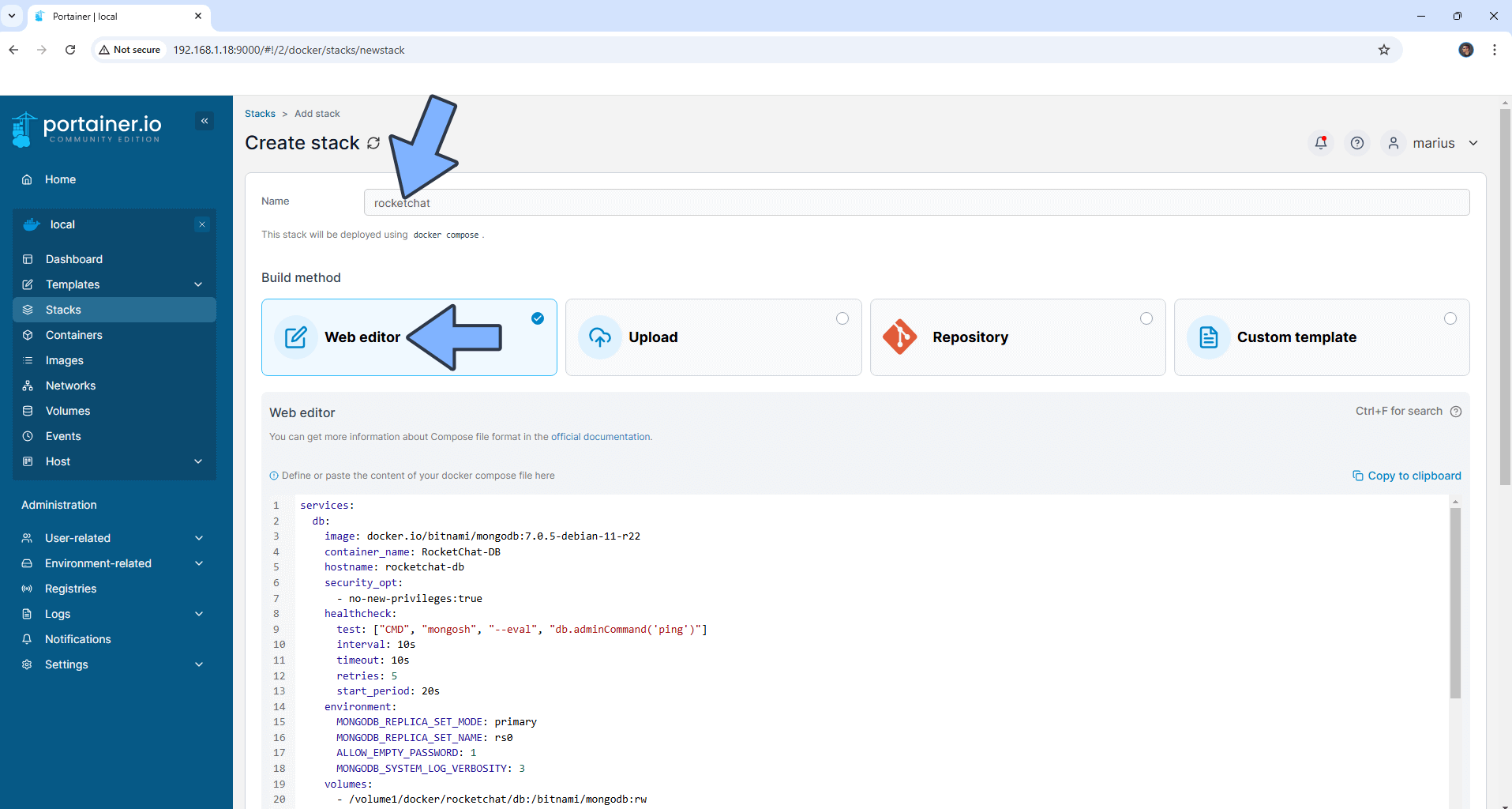
STEP 19
Scroll down on the page until you see a button named Deploy the stack. Click on it. Follow the instructions in the image below. The installation process can take up to a few minutes. It will depend on your Internet speed connection.
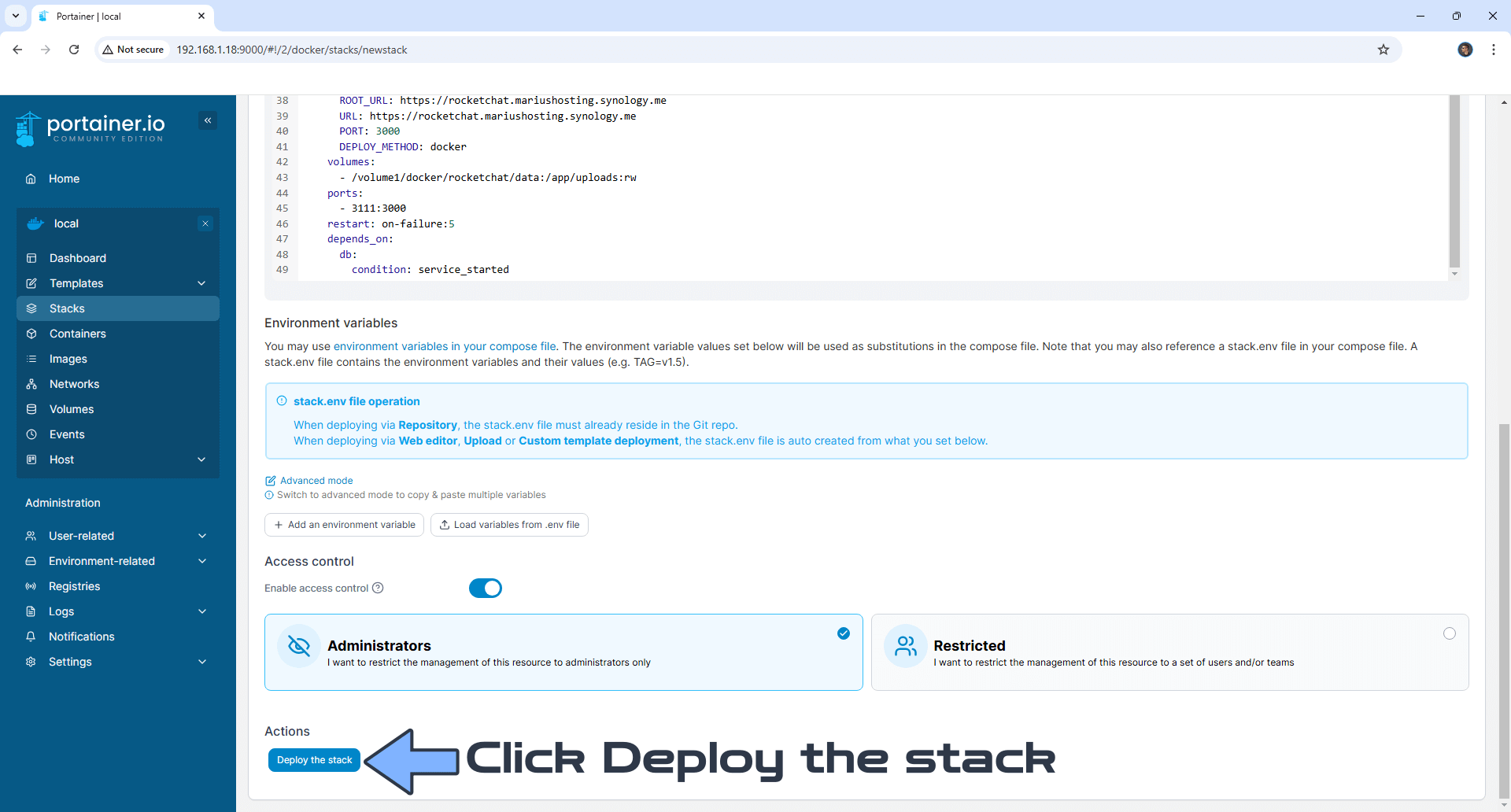
STEP 20
If everything goes right, you will see the following message at the top right of your screen: “Success Stack successfully deployed“.
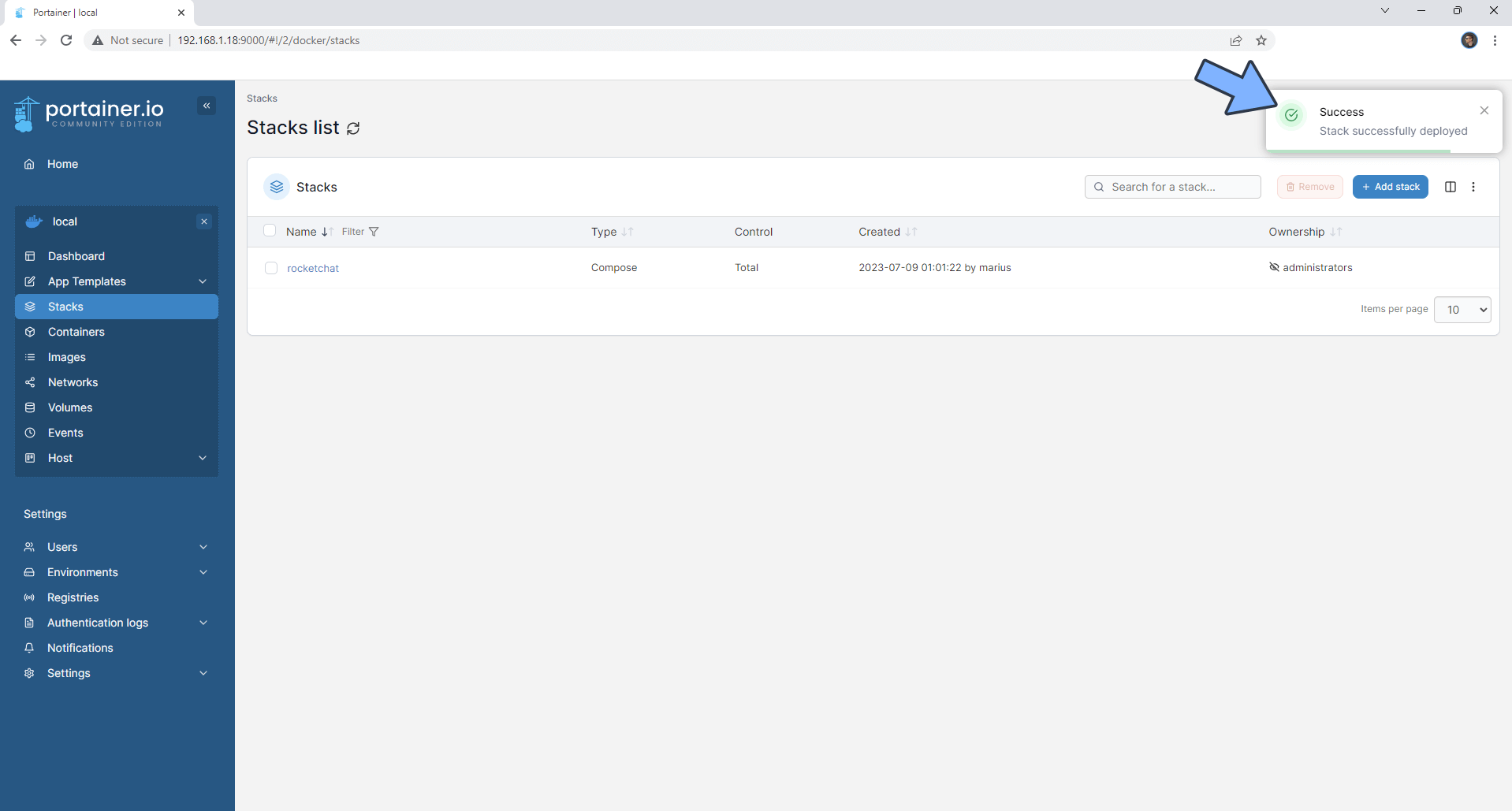
STEP 21
🟢Please Support My work by Making a Donation. Almost 99,9% of the people that install something using my guides forget to support my work, or just ignore STEP 1. I’ve been very honest about this aspect of my work since the beginning: I don’t run any ADS, I don’t require subscriptions, paid or otherwise, I don’t collect IPs, emails, and I don’t have any referral links from Amazon or other merchants. I also don’t have any POP-UPs or COOKIES. I have repeatedly been told over the years how much I have contributed to the community. It’s something I love doing and have been honest about my passion since the beginning. But I also Need The Community to Support me Back to be able to continue doing this work.
STEP 22
Please wait approximately 5 minutes for the installation to be completed or you will get a Synology blank page if you try to connect too soon. Now open your browser and type in your HTTPS/SSL certificate like this https://rocketchat.yourname.synology.me In my case it’s https://rocketchat.mariushosting.synology.me If everything goes right, you will see the rocket.chat installation page. Add your own First and last name, your own Username, your own Email and your own Password then click Next. Follow the instructions in the image below.
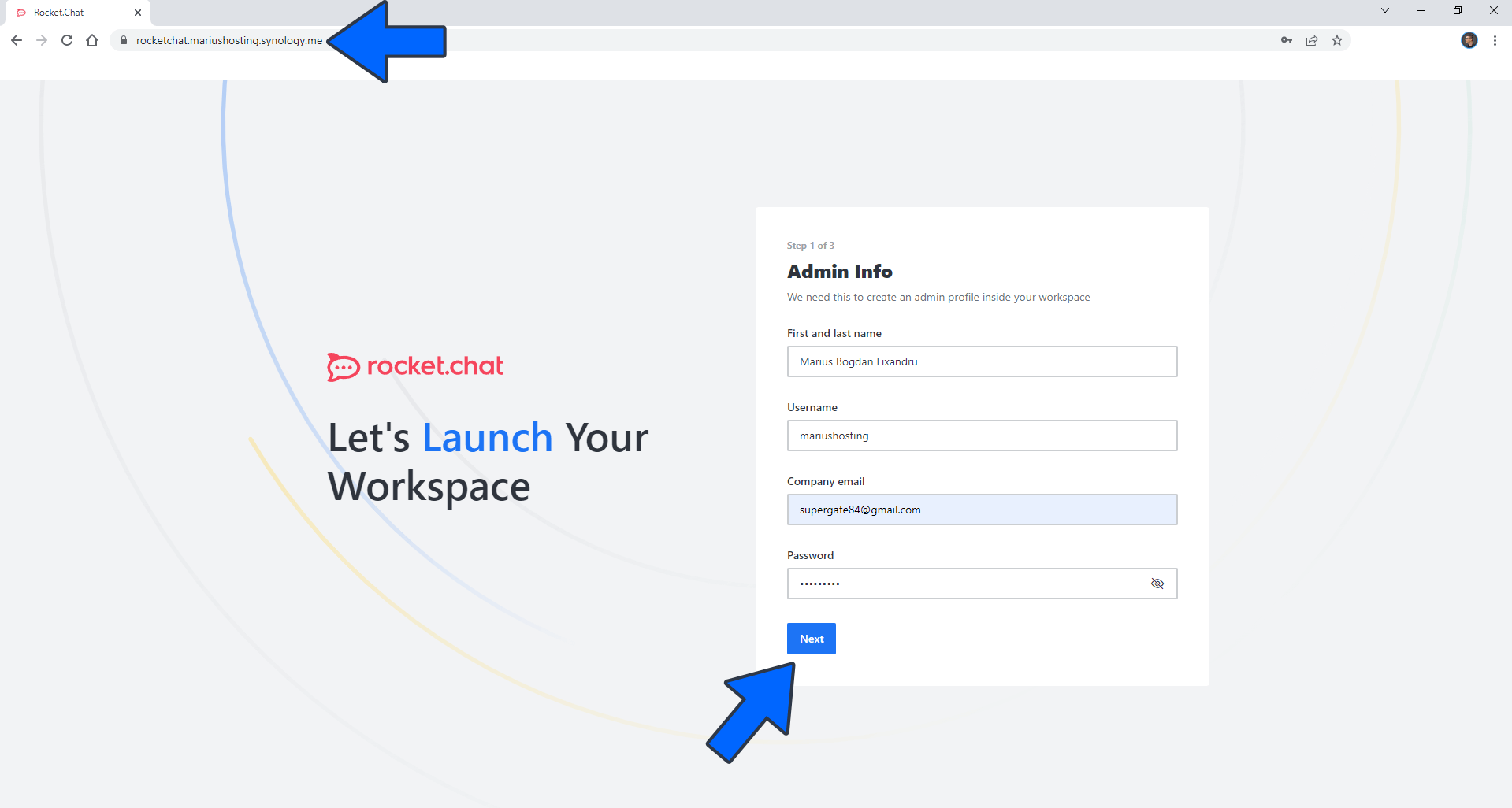
STEP 23
Add your own Organization Info then click Next. Follow the instructions in the image below.
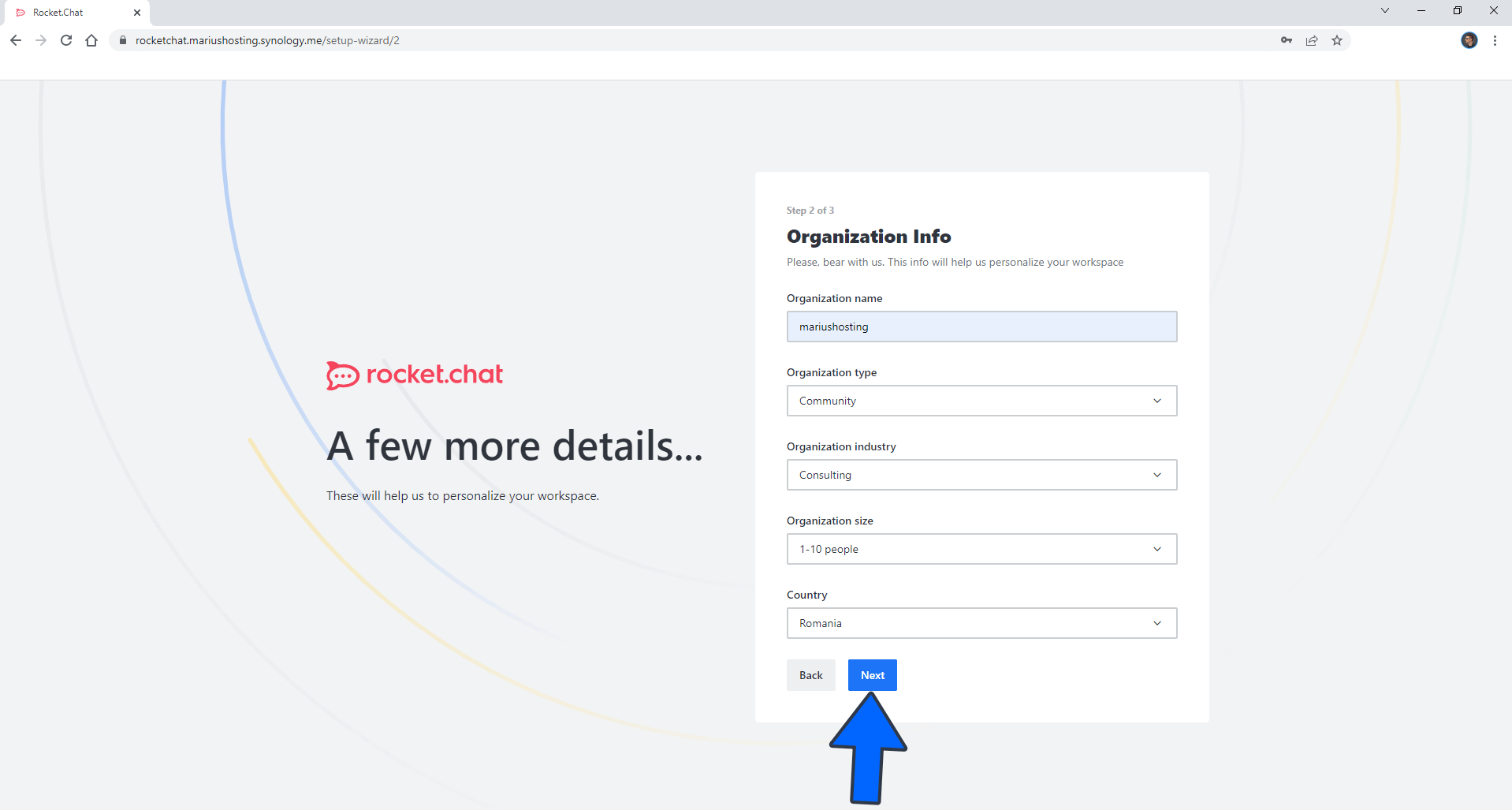
STEP 24
Add your own email then check “I agree with Terms and Conditions and Privacy Policy” Click Register workspace. Follow the instructions in the image below.
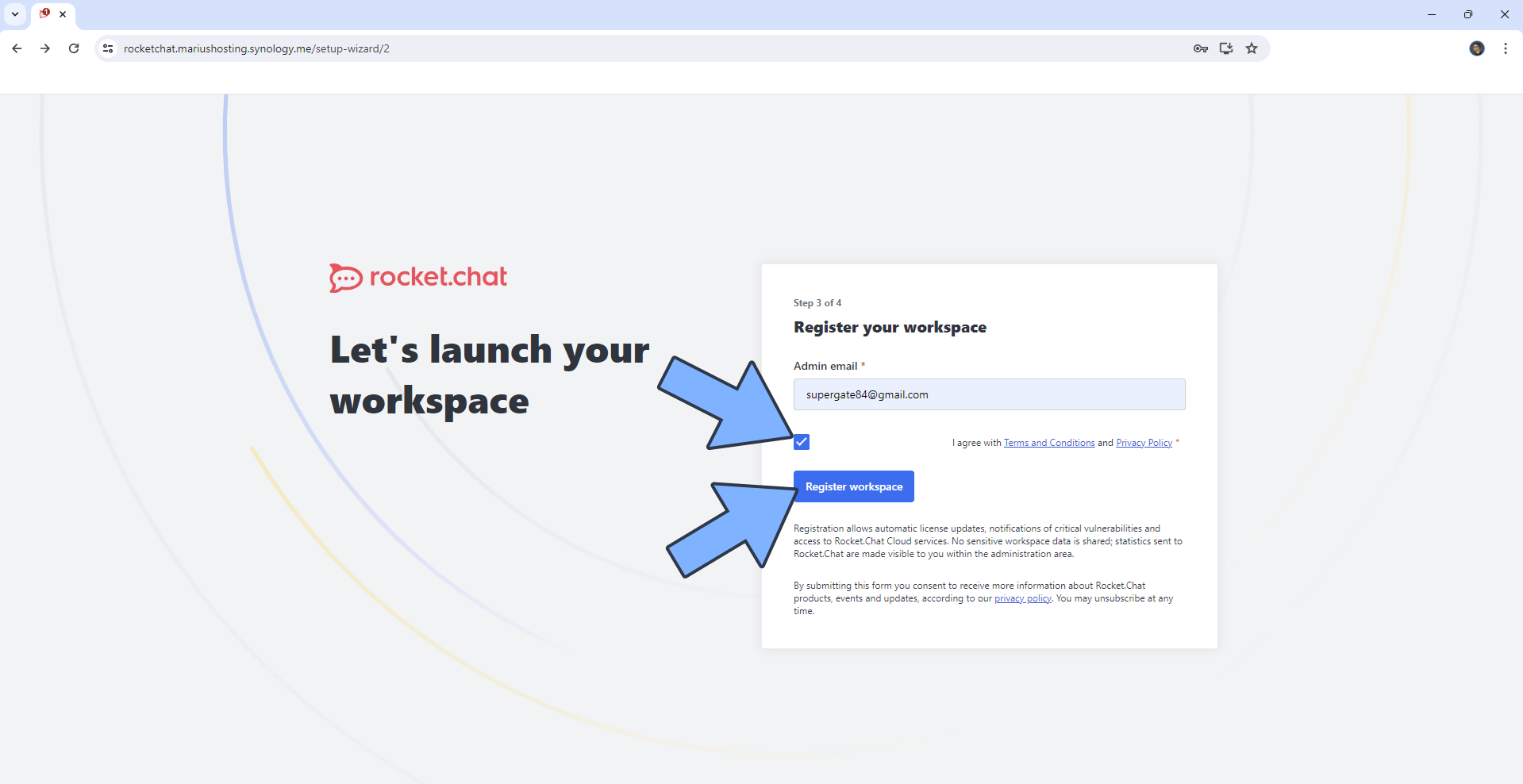
STEP 25
Go straight to STEP 26.
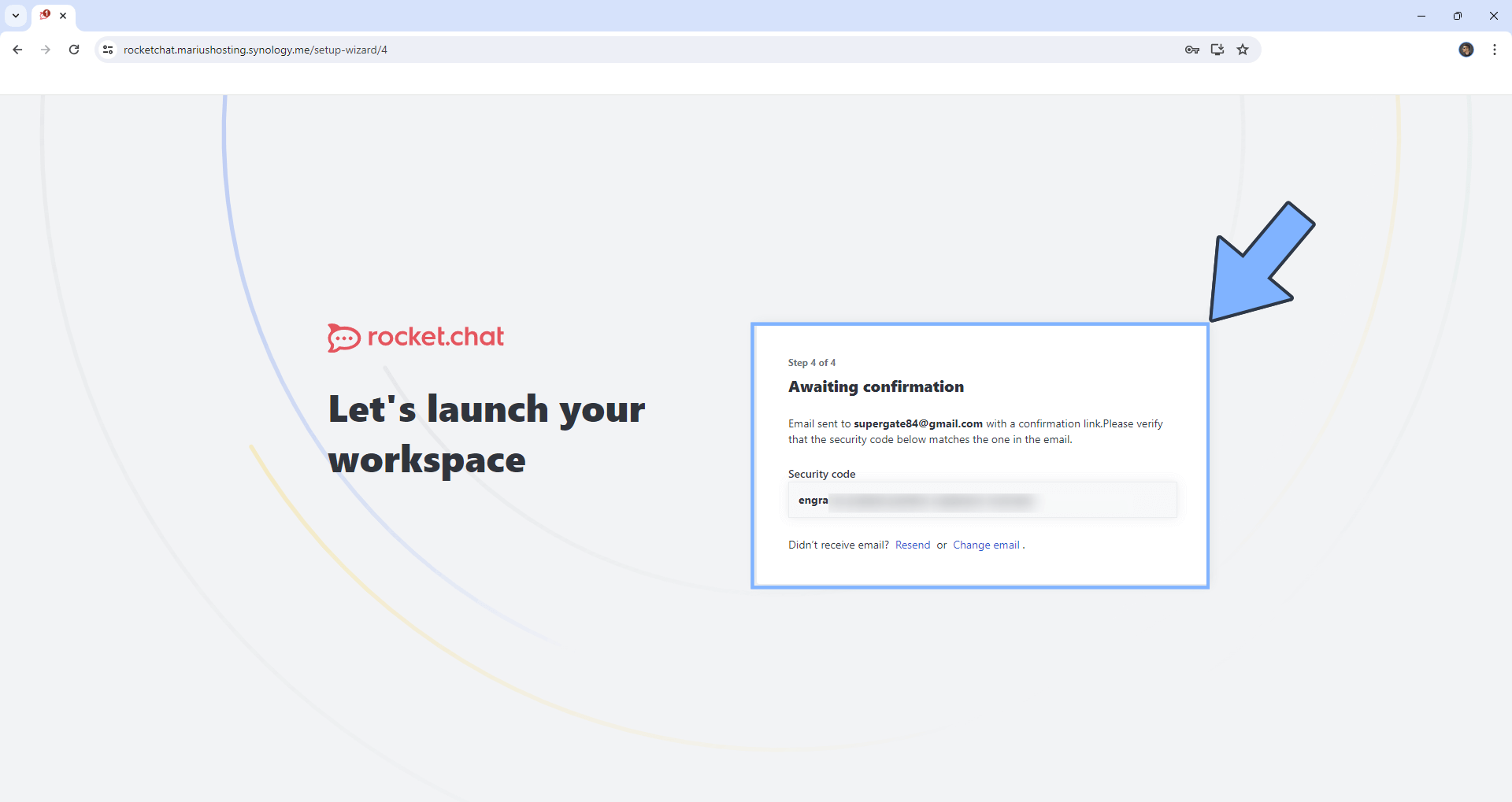
STEP 26
Check your email that you have previously added at STEP 24 then click Verify Registration. Follow the instructions in the image below. ⚠️Note: Remember to search the email in your spam folder as well.
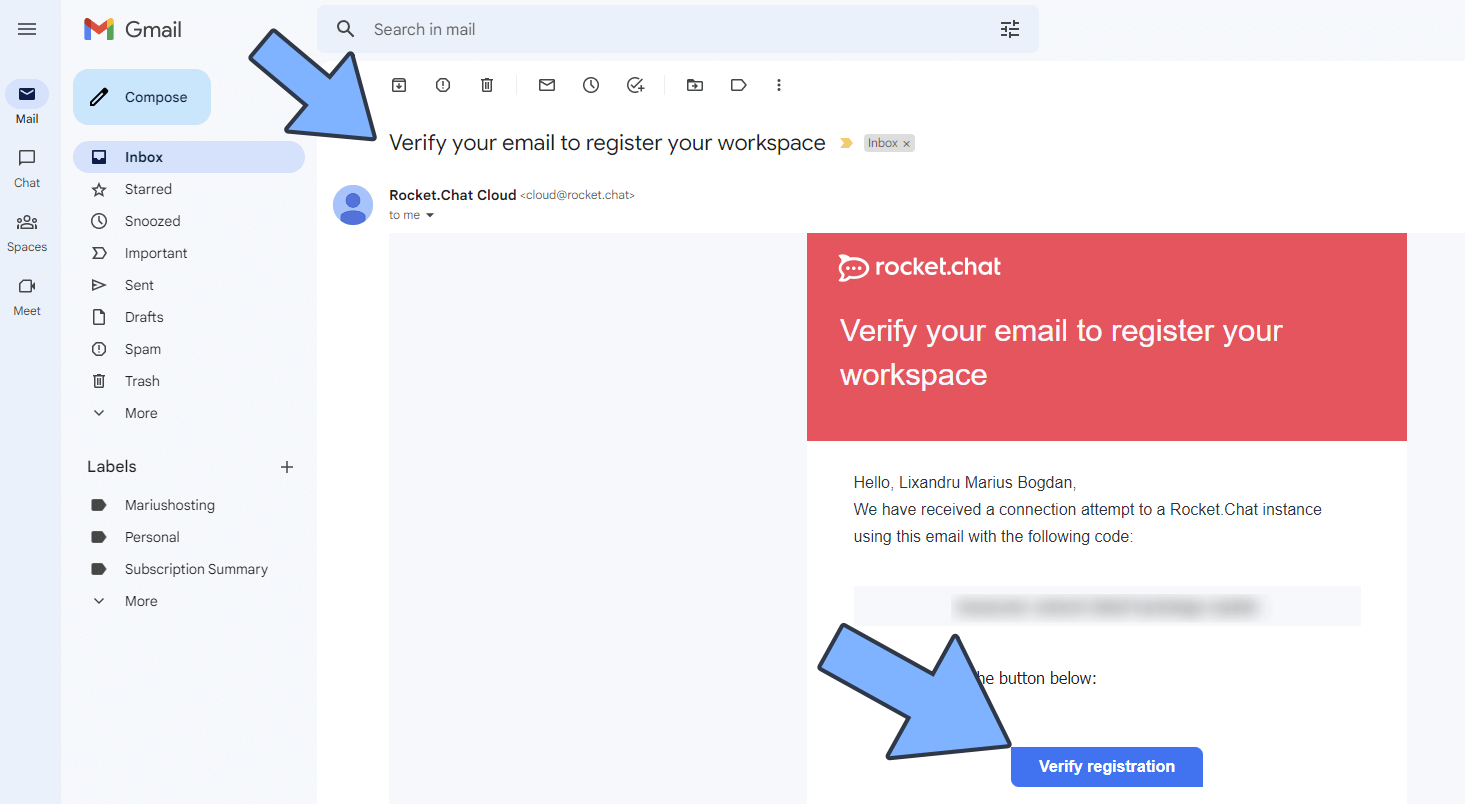
STEP 27
Now open your browser and type in your HTTPS/SSL certificate like this https://rocketchat.yourname.synology.me In my case it’s https://rocketchat.mariushosting.synology.me If everything goes right, you will see the Rocket.Chat main page. Enjoy Rocket.Chat on your Synology NAS!
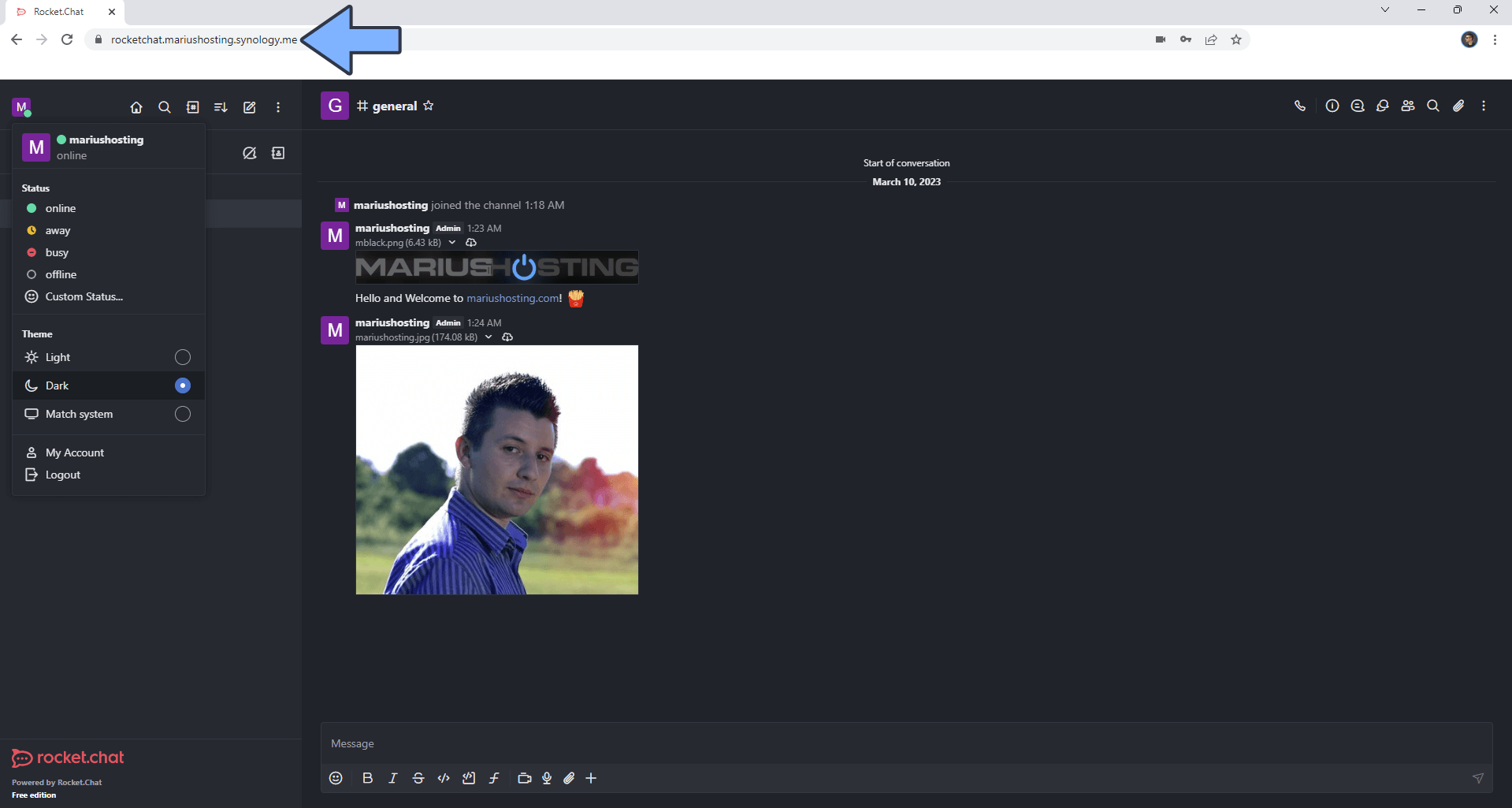
Enjoy Rocket.chat!
If you encounter issues by using this container, make sure to check out the Common Docker issues article.
Note: If you experience connection issues with Rocket.Chat, make sure RULE 5 and RULE 6 is correctly applied on your Synology NAS Firewall configuration.
Note: Find out how to update the Rocket.Chat container with the latest image.
Note: How to Back Up Docker Containers on your Synology NAS.
Note: Can I run Docker on my Synology NAS? See the supported models.
Note: How to Free Disk Space on Your NAS if You Run Docker.
Note: How to Schedule Start & Stop For Docker Containers.
Note: How to Activate Email Notifications.
Note: How to Add Access Control Profile on Your NAS.
Note: How to Change Docker Containers Restart Policy.
Note: How to Use Docker Containers With VPN.
Note: Convert Docker Run Into Docker Compose.
Note: How to Clean Docker.
Note: How to Clean Docker Automatically.
Note: Best Practices When Using Docker and DDNS.
Note: Some Docker Containers Need WebSocket.
Note: Find out the Best NAS Models For Docker.
Note: Activate Gmail SMTP For Docker Containers.
This post was updated on Friday / July 18th, 2025 at 3:44 PM
